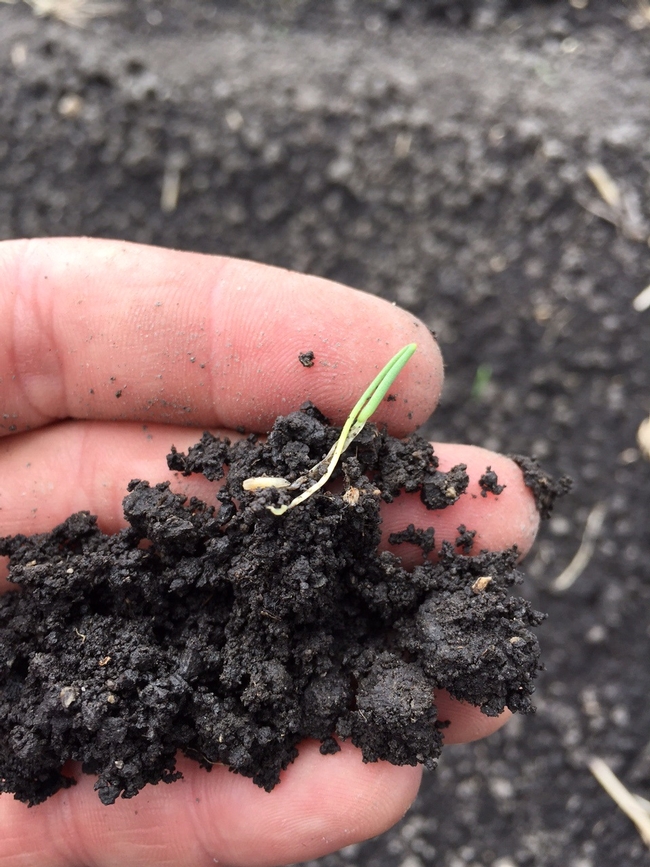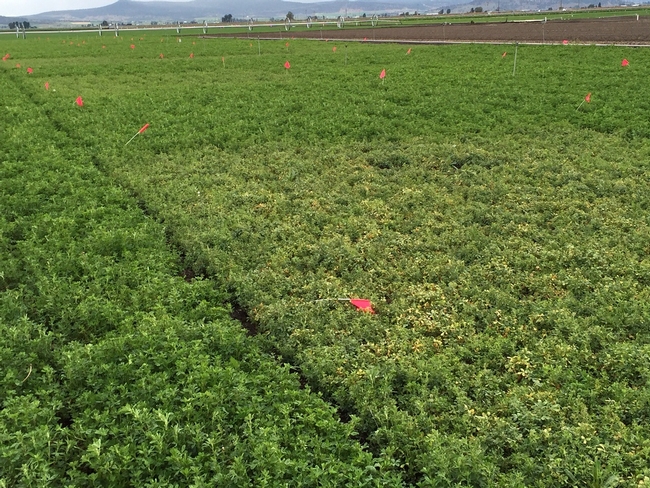With the much needed recent rain, we had some time this morning to provide a short update on some of the observations we've made in the crop fields around Tulelake this spring.
Onions
2015 appears to be a terrible year for seed corn maggot damage. The high amounts of organic matter in several fields and warm weather were favorable to high maggot populations. It appears maggots have caused significant damage to many fields, including fields treated with Lorsban. I estimate we lost over 10% of the onion stand at IREC even though the field was treated with the maximum rate of liquid Lorsban applied in-furrow. With this being said, we had a few onion plots that were not treated with an insecticide this spring, and we lost over 90% of the onion stand.
I ran the degree day models for seedcorn maggot and onion maggot today. Seedcorn maggot is nearing the end of the first generation and second generation flies are emerging. Peak onion maggot fly emergence occurred last week, so most fields are susceptible to onion maggot damage this year. This trend stresses the importance of using a preventive insecticide treatment at planting.
On another note, the recent rainy weather and overcast conditions make onions more susceptible to Goal herbicide injury. Growers should keep this in mind when applying postemergence herbicide to seedling onions this week. Delaying applications until sunny weather conditions return is best approach to avoid injury.
Alfalfa
Alfalfa was off to a great start this year with the mild winter, but it wasn't long until many fields went backward. The blue alfalfa aphid, which injects a toxin into the alfalfa plant, is widespread throughout the Basin. Pressure has been especially intense around Tulelake.
Preliminary research trials suggest that the insecticide Sivanto, and the unregistered insecticides Endigo and Transform, were highly effective. Lannate and another experimental insecticide killed the beneficial insects and eventually increased the blue alfalfa aphid, resulting in far more alfalfa damage than even the untreated control plots.
In addition to the blue alfalfa aphid, alfalfa weevil populations have climbed to levels warranting treatment in many fields. The aphid damage, coupled with weevil feed, on top of some hard frosts a couple of weeks ago, have left many fields much worse off than normal, rather than ahead of schedule like one would expect with the mild winter and warm spring. Hopefully, after this cloudy weather clears out we will return to warm sunny days and the alfalfa will get back on track. This sure has been a strange year so far. "Normal" sure sounds nice.


